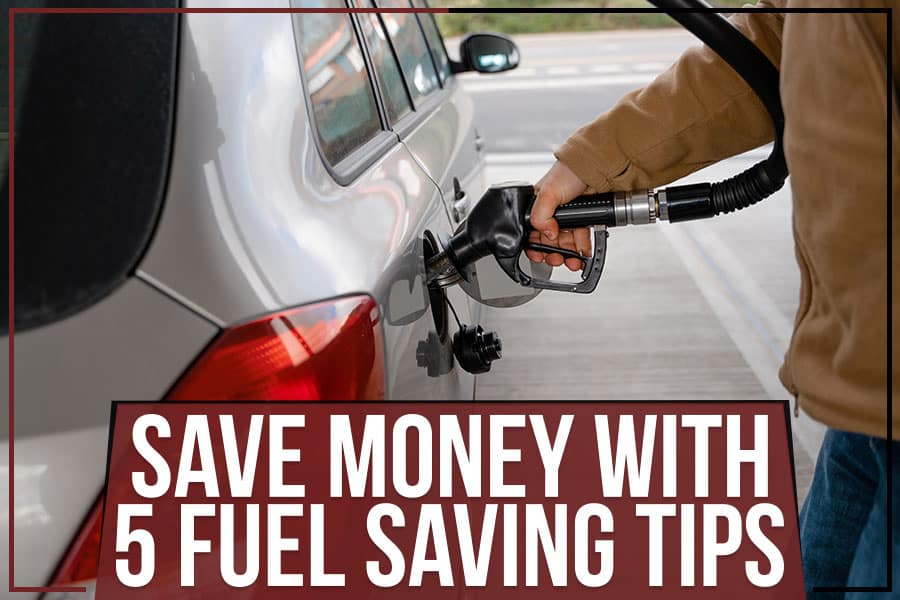We’ve been waiting for Amazon to come to Australia for what seems like forever.
The first wave of excitement came in April this year, when Amazon bought a 24,000 square meter warehouse in Melbourne, and confirmed that it was coming to Australia.
In August, they started recruiting operations managers, pickers, packers, systems technicians, and HR specialists, and other staff…
…but it’s now November, and word still isn’t out on when Amazon is launching for real.

When is Amazon coming to Australia?
If you’ve been keeping an eye on Amazon’s updates for a while now, you’re probably getting a little antsy.
But here’s the thing:
Amazon is being extremely tight-lipped about its launch date, and no one knows for sure when they’re officially launching.
That hasn’t kept people from speculating, though.
Those who have put in their two cents include Citi analysts, who predicted that Amazon would formally launch in October, ahead of the Black Friday.
According to these analysts, Amazon set its buying terms and placed its first orders with its suppliers in September, which meant that it was likely that they’d launch in October.
Obviously, that didn’t happen…
…but another possible scenario is for Amazon to launch in late November or early December so that it can still make the most out of the festive season.
If you haven’t started thinking about what Amazon’s entrance means for your online business, it’s time to start doing so now!

What does Amazon coming to Australia mean for retailers and online sellers?
Amazon is known, first and foremost, as a disruptor.
Before looking at the impact that Amazon will have on local companies, you need to understand this about Amazon:
Unlike traditional companies, they don’t exist to maximize its profits.
In fact, Amazon reinvests almost all their profits into their platform and products, and aren’t afraid to decrease their own margins in order to achieve faster growth.
Coming back to the topic of Amazon’s launch in Australia, industry experts agree that Amazon is likely to maintain their strategy of matching or being the lowest price in the market at all times.
More specifically, Watermark Funds Investment’s Chief Investment Officer, Justin Braitling, noted that Amazon was planning to undercut retailers in Australia by as much as 30%.
If you didn’t already know, Australian retailers are used to relatively fat profit margins. In 2016, for example, here’s what your favourite retailers earned:
- Harvey Norman: 31.4%
- Myer: 42.1%
- Super Retail Group: 43.4%
- JB Hi-Fi: 21.9%
- Woolworths: 26.8%
- Wesfarmers: 31.0%
In comparison, in 2016, Amazon’s margin was just 6.8%.
So when Amazon comes in with its low, low prices, you can bet that it’ll shake things up.
Which local brand will be hit the hardest?

According to Credit Suisse, Amazon’s presence in Australia could result in Myer losing up to 55% of its earnings over the next five years.
Morgan Stanley, on the other hand, says that Wesfarmers, which owns Target and Kmart, is likely to be impacted the most.
We’re talking about a loss of $428 million in earnings by 2026, to be precise.
That having been said, Russell Zimmerman of the Australian Retailers Association is of the opinion that Amazon won’t pose too much of a threat to existing retailers.
According to Zimmerman, retailers have been preparing for Amazon’s arrival for a long time now, and online sellers (who don’t have brick and mortar presence at all) should be the ones getting worried about Amazon entering the market.
But hang on – it’s not all doom and gloom here.
Retailers and online sellers who innovate and improve upon their business models can still hold their own against Amazon.
In the US, for example, stores such as Best Buy and Dick’s Sports Goods have managed to survive despite competition from Amazon.

The trick is to become a “category killer”, which specializes in and offers an extensive selection of products within a given category.
One way to go about doing this?
Ramp up your private label products, like how Best Buy has done.
Pro Tip: Want to make some extra income this year? Consider switching from Amazon to Shopify to reduce fees on sold products!
Alternatively, you can also work with your suppliers to get exclusive products and ranges which aren’t available on Amazon.
Then there’s also the possibility of embracing the dark side, and joining Amazon Australia as a third-party seller…
…but before we delve into this, let’s look at what other Amazon services are coming our way in Australia.

Other Amazon services coming to Australia
Amazon Prime
If you have friends or even casual acquaintances from the US, you’ll probably have heard them gushing about Amazon’s Prime Now service.
Amazon Prime is essentially a membership that Amazon shoppers purchase. This offers them a whole host of benefits, including…
- Free unlimited photo storage on Amazon’s photo app
- Getting access to Amazon’s Lightning Deals ahead of everyone else
- Getting an extra $5 every time you reload a $100 Amazon gift card
- Listening to music for free on Prime Music
…and more, but by far the biggest draw of Amazon Prime is that members get free 2-hour, same-day or 2-day shipping on a wide variety of products on Amazon.
Now, whilst we know that Amazon Prime is coming to Australia, we’re not sure when it’ll happen.
But whilst we’re waiting for Amazon Prime to be available here, you can still make use of Prime to reach your customers in areas outside of Australia. More on this in a bit!
Amazon Kindle
For the uninitiated, Amazon’s Australian Kindle Store was actually launched way back in 2013.

Last year, Amazon Kindle Unlimited also hit our shores; this is an eBook subscription plan that allows you to explore up to a million titles for just $13.99 per month.
The eBooks can be read on a Kindle e-reader, Fire Tablet or the official Kindle app for Android or iOS. Australians may purchase their Kindle devices through retailers such as Dick Smith and Big W stores.
Registering to sell on Amazon Australia
Ever heard the phrase, if you can’t beat ‘em, join ‘em?
At the end of the day, you’re in business because you want to make money.
So if Amazon Australia is where the money is at, then why not join them, and maximize your sales through their platform?
In this section, you’ll learn how to sign up to sell on Amazon, as well as how to use Seller Central Australia.
Let’s get to it!
First things first: register to become a seller on Amazon Australia.

Simply input a few details – that’s all there is to it.
You won’t be able to start selling immediately (obviously!), but Amazon will get in touch when the time comes.
Next, familiarize yourself with Amazon’s Seller Central.
As of now, you still can’t get an Australian Seller Central account; however, I recommend signing up for a US account just so you can play around with your dashboard and see how everything works.
If you’d like to, go ahead and list a few products for sale, so you can understand how the process works.

If not, it’ll still do you good to poke around Seller Central, and look through Amazon’s resources and guides that teach you how to become a more effective seller.
Using fulfilment by Amazon (FBA) in Australia
Like I mentioned earlier, FBA isn’t available to Australian shoppers yet.
But that doesn’t stop you from using your US seller account to sell items to overseas shoppers…
…and have your orders fulfilled by Amazon FBA!

What’s the advantages of using Amazon’s FBA service?
Firstly, this helps to increase the trustworthiness of your brand.
Items which are shipped using Amazon’s FBA come with a little “Fulfilled by Amazon” disclaimer on their product pages…
…and what this does is it gives your customer greater peace of mind.
(Your customers know that Amazon isn’t likely to screw up whilst delivering your order – and in the unlikely event that they do, they trust that the mistake will be rectified ASAP!)
But more importantly, using Amazon’s FBA service enables you to offer Prime shipping to your consumers.
Think about it: without Prime shipping, a customer in the US might need to wait for up to 20 days to get his or her item. Such a deal breaker.
Even if your customer is willing to pay for expedited shipping, they’ll still need to wait for a minimum of 3-5 days for their purchase to arrive.
But if you use Amazon’s FBA, and offer Prime shipping, your same customer in the US can place an order today, and have the item with him within two hours.
Given how we’re all suckers for instant gratification, I’d say Prime shipping is a real gamechanger for Australian businesses hoping to break into the US (or overseas!) market.
So how do you sell using FBA in Australia?

It’s fairly simple:
The first step is to set up your FBA account. If you already have an existing seller account, go ahead and add FBA to your account. If not, just create a new seller account.
Once that’s done, create your product listings, and prepare your products. (Take note that Amazon is pretty stringent about how you prep your FBA products; you’ll have to adhere to a long list of prepping requirements in order for your product to be accepted!)
The last part of the process is to ship your items to Amazon.
That’s it – you’re done!
Amazon will take care of everything else, including picking, packing, and shipping your items, providing tracking information to your customers, and even taking care of customer service.
Awesome, or what?
Final thoughts on selling on Amazon Australia
Amazon is going to make a huge splash when it finally launches in Australia – there’s no doubt about that.
And yes, going by what the analysts are telling us, things are looking pretty bleak for local retailers and online sellers.
But that doesn’t mean you should just give up without a fight.
Think of Amazon Australia as an opportunity, instead of a threat.
Sure, it’s providing local consumers with more choice than ever, but at the same time, it’s also enabling local sellers to bring their products overseas, and reach out to foreign audiences.
The numbers don’t lie:
In 2016, eCommerce sales in Australia amounted to AU$20 billion.
In the same year, eCommerce sales worldwide amounted to US$1.86 trillion.

Let that number sink in for a bit.
US$1.86 trillion.
That’s more than 120 times the size of the eCommerce market in Australia.
Here’s what this means:
Your sales in Australia might be cannibalized by Amazon, but as long as you capitalize on foreign markets and make up for this loss by selling overseas, you can still increase your overall profits and laugh your way to the bank.
Will Amazon Australia break you, or will it make you?
The choice is yours! 😉
If you liked this article, please take a minute to share it with all your other entrepreneurs friends. Get them to sign up for Amazon seller accounts as well!
I’m telling you about this, because I believe in giving information regarding PPC advertising
forward,
I don’t know how much longer people accepting new technology , so you had better check it out now if you can.
Just click the link below to get started:
Discover more from Personal Blog of Richard Tong
Subscribe to get the latest posts sent to your email.





Thanks a lot for the article post. Really Great.